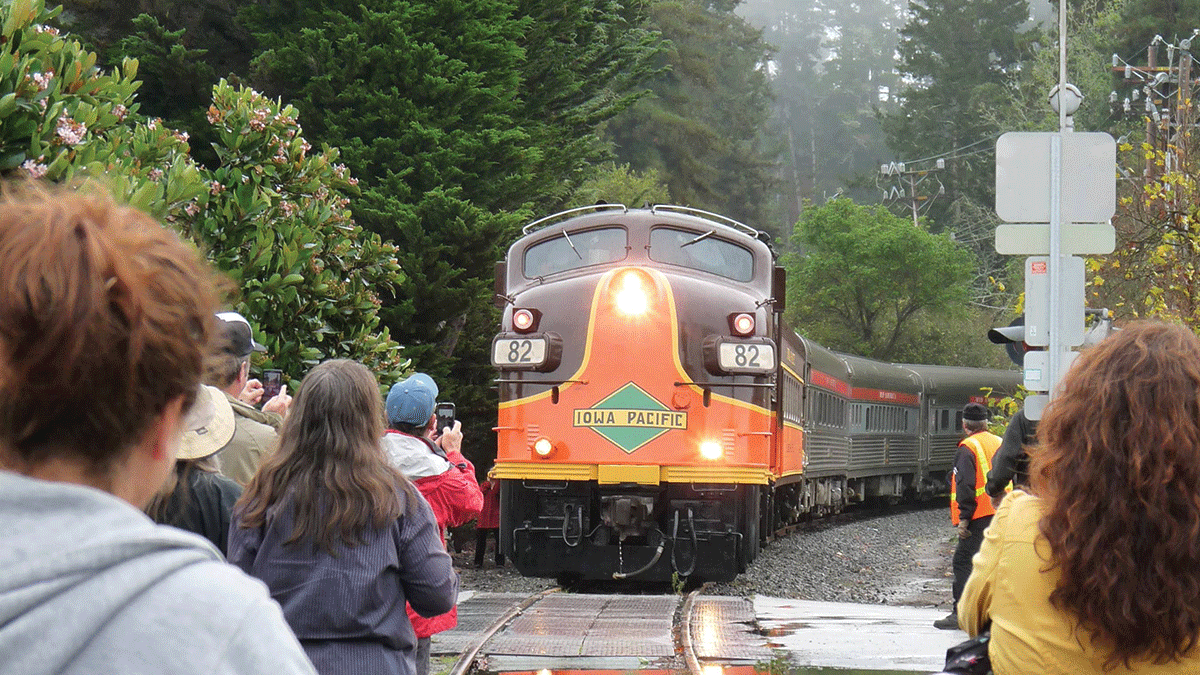The highly anticipated Unified Corridor Study is out—and everybody’s arguing about what it means.
The new Unified Corridor Study (UCS) analysis represents a big step forward, said Capitola City Councilmember Ed Bottorff at the Santa Cruz County Regional Transportation Commission (RTC) meeting last Thursday.
Staff and consultants made the 200-plus-page document as complete as possible, said Bottorff. Experts surveyed the best ways to get from one end of the county to the other. The most closely watched portion of the analysis has been the question of what to do with one of the three major north/south avenues—the county’s coastal freight rail corridor. The document has a lot of numbers and estimates, some of them open to interpretation.
The costs are estimates, and many of the calculations are moving targets, said Bottorff. “As we’ve all learned in construction, some projects may seem like they cost a certain amount, and most likely, they’re gonna cost more,” he said. “So I think everyone should just take that into consideration when they look at this.”
Friends of the Rail and Trail tout the analysis as proof that a train is not only feasible, but also the best use for the corridor. Members of Greenway and Trail Now, who want the corridor used for a wider trail with no train, say that the estimates have a pro-rail bias and are further proof that the whole process has been unfair.
There will be two public meetings this month on the UCS analysis, one in Live Oak and another in Watsonville. Staff will present a recommendation on a preferred scenario on Nov. 15. The commission may vote and take action no sooner than Dec. 6. (That date would be three days after the RTC’s next executive director is expected to take over for George Dondero, who is retiring.)
Each scenario outlined in the study has a mixture of different options. The first one features carpool lanes, additional auxiliary lanes, on-ramp metering, intersection improvements, and a form of bus rapid transit—as well as a bike/pedestrian rail trail, but no train.
Commissioner Randy Johnson, a Scotts Valley city councilmember, compared the various scenarios to four pre-made pizzas. Furthering his metaphor, Johnson suggested the commission should take a more central role in building its own pizza, although the commission did approve the chosen scenarios last year.
Johnson also felt that the consultants should have updated commissioners as they worked on their study.
Commissioner Andy Schiffrin, who is a staffer for Supervisor Ryan Coonerty, said the consultants never talked to him—and he’s glad they didn’t. Schiffrin said if critics believe the study is just a sham, meddling from the commission would only contribute to that perception.
“What we wanted was an independent analysis, and an independent analysis doesn’t mean you asked people along the way what they were doing,” Schiffrin said. “What it means is you wait until the end, and then you get mad.”
There will be two public meetings on the UCS analysis. The first is 6-7:30 p.m. on Monday, Oct. 15 at Live Oak Elementary School’s multi-purpose room. The second will be 6-7:30 p.m. on Tuesday, Oct. 16, in the Watsonville Civic Plaza Community Room A, on the fourth floor of the City Hall building. Input can also be emailed to uc*@sc****.org, or mailed to the RTC at 1523 Pacific Ave., Santa Cruz, 95062.















Many of us with a transportation and energy background expected good scores for Scenario B, which follows Caltrans’ lead and shifts investments away from highway motor vehicle toward rail transit and active transportation alternatives, and the study confirms our expectations.
In the area of Economic Vitality, Rail and Trail Scenario B received PERFECT scores, see below.
Scenario B also features:
The highest share of bicycling trips,
The highest number of daily transit trips (by far),
The fewest collisions, greatest safety,
The lowest levels of greenhouse gas emissions,
Significant levels of available funding, it’s the second most affordable mix of investments.
Most importantly, alternatives to driving provide great equity, benefits to those who most need it.
A wide trail without transit won’t help Watsonville, it won’t help 8 year olds and 80 year olds, the disabled and the working poor.
“An advanced city is not one where even the poor use cars, but one where even the rich use public transport.”
– Enrique Penalosa
Let’s do this right, lets do this like Copenhagen: http://bitibi.eu/dox/BiTiBi_Booklet_WEB_Feb2017.pdf